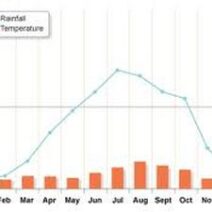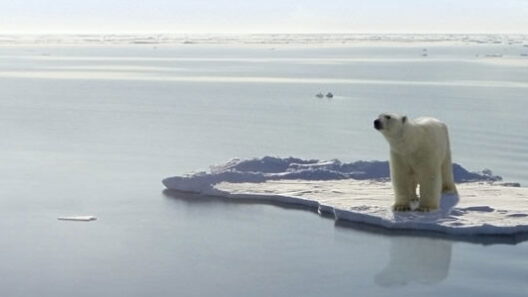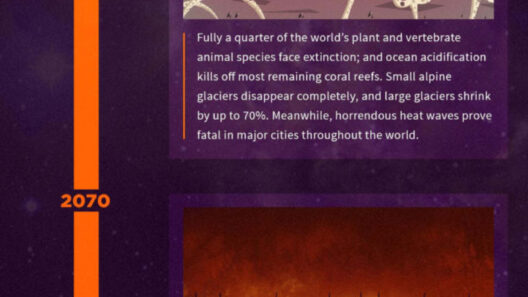As we voyage into an era marked by unprecedented climatic alterations, one might pose the playful question: Are climate scientists secretly planning for a hotter planet? While this inquiry may sound conspiratorial or lighthearted, it invites a more profound exploration of the dynamics between climate science, policy-making, and public perception. In this discourse, we will delve into the implications of current warming trends, the response of the scientific community, and the broader societal ramifications of a planet that is inexorably heating.
To contextualize the discussion, it is crucial to acknowledge the startling statistics that illuminate the rapid pace of global warming. Since the late 19th century, the Earth’s average temperature has risen by approximately 1.2 degrees Celsius, primarily due to anthropogenic activities such as the incessant burning of fossil fuels and deforestation. This warming trajectory is far from being a mere fluctuation; it is representative of systemic changes that risk crossing critical thresholds, beyond which the consequences could be catastrophic.
One might wonder: what is the scientific community’s role in this transformation? Scientists have been at the forefront of climate research, meticulously documenting observable shifts in weather patterns, sea levels, and biodiversity loss. Yet, despite the rigorous data collection and predictive modeling, there exists a palpable tension between the findings generated by climate science and the decisive action required to curtail these detrimental trends. The challenge lies not only in conveying the urgency of the situation but also in translating scientific data into actionable policy changes.
In an environment where empirical evidence often clashes with political interests, the notion of scientists “planning” for a hotter planet becomes intriguing. While the majority of climate scientists espouse a commitment to advocating for mitigation strategies—such as renewable energy adoption, carbon reduction policies, and conservation efforts—there is a growing acknowledgment that adaptation strategies must also take center stage. In the face of inevitable warming, resilience-building becomes essential.
Consider the implications of adaptation. Cities are beginning to invest in infrastructure designed to withstand extreme weather events, such as flooding and heatwaves. Agricultural practices are being re-envisioned to ensure food security in varying climatic conditions. This adaptation strategy may give the impression that scientists are preparing for a hotter future, but perhaps it is more accurate to say they are taking pragmatic steps to safeguard humanity amidst an evolving climate landscape.
Furthermore, the question of whether scientists are “planning” for a hotter planet also raises considerations about moral responsibility. Should the scientific community adopt a more defeatist or fatalistic stance, one could argue that it would be tacitly succumbing to a bleak future. Alternatively, the recognition of future risks catalyzes an imperative for innovation and change. The development of geoengineering technologies, for example, underscores this duality. As researchers explore solar radiation management or carbon capture methods, the line between proactive solution-seeking and resignation blurs.
Moreover, interdisciplinary collaboration plays a pivotal role in addressing climate change. Scientists must engage with sociologists, economists, urban planners, and policymakers to create holistic approaches that encompass environmental justice and equity. Climate resilience cannot be attained through solely scientific intervention; it demands a robust communal effort that resonates with the varied experiences and needs of affected populations.
As we navigate these multifaceted issues, we must also recognize the significance of public engagement. A well-informed populace is fundamental to fostering a climate-conscious society. Efforts to demystify climate science, elucidate risks, and promote proactive measures are paramount. However, the sensationalism often perpetuated in media narratives can lead to apathy or fatalism, detracting from collective action. It is essential to balance the gravity of climate threats with actionable optimism, inspiring individuals and communities to contribute to the larger narrative of sustainability and resilience.
Concurrently, one cannot ignore the economic ramifications of climate inaction or insufficient adaptation. The losses incurred due to extreme weather events, shifting agricultural yields, and deteriorating public health systems are substantial. Insurance industries, for instance, are recalibrating their models in response to increasing claims resulting from climate-related disasters. Herein lies another challenge: fostering economic incentives that align with environmental stewardship, encouraging industries to prioritize sustainability as integral to their business models.
Ultimately, the interplay between climate science, policy, and public perception is complex and continually evolving. While scientists may not be “planning” for a hotter planet in a conspiratorial sense, they are undoubtedly engaged in the intricate task of understanding and navigating the consequences of a changing climate. The narrative must shift from one of despair to one of actionable resilience, urging global communities to embrace their role in this collective journey. We must champion not merely adaptation, but also an enduring commitment to mitigation, aiming for a sustainable future.
In conclusion, the question of whether climate scientists are secretly planning for a hotter planet unveils pertinent discussions surrounding preparedness, policy, and responsibility. As climate realities unfold, the scientific community is tasked with wielding knowledge as a tool for empowerment rather than resignation. By fostering collaboration, public engagement, and innovative solutions, we can navigate the challenges ahead and work toward a future that not only confronts climate change but endeavors to reverse its course.







